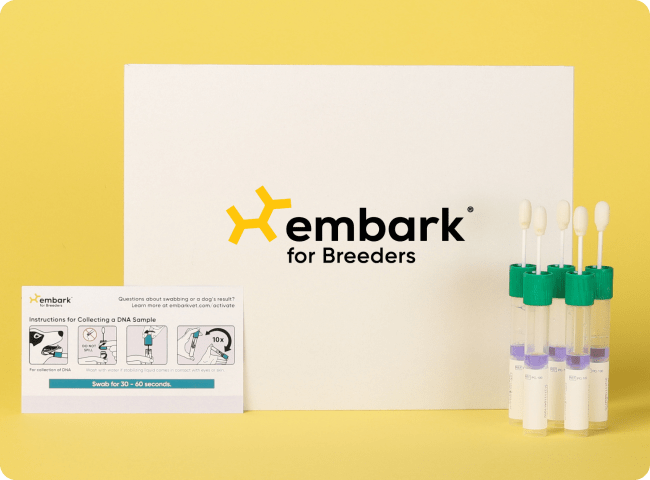Progressive Retinal Atrophy
Progressive retinal atrophy (PRA) describes a group of non-painful inherited degenerative or dysplastic disorders of the photoreceptor cells of the retina that results in vision loss in dogs. PRA caused by this IFT122 variant is a late-onset form of PRA, meaning that it affects dogs whose eyes have completed their normal development.
-
Signs and symptoms
A dog with decreased vision may be reluctant to go down stairs or go into a dark room or outside at night. They may bump into door frames or corners and have difficulty fetching toys. You may notice a characteristic eyeshine due to increased reflectivity of the tapetum, the layer of the eye that reflects light. The dog's discernible visual impairment will typically lag behind changes observed by a veterinarian and electroretinogram (ERG) abnormalities.
Changes may be observed as early as 2 years of age, leading PRA to be “suspected.” The average age of the PRA “affected” diagnosis is 9 years, but varies. The disease progresses slowly, as some affected dogs may still have some eyesight left at 13 years of age. -
Diagnosis
PRA is diagnosed by examination of the back of the eye (the "fundus"). In the early stages, it may be difficult to observe changes to the retina, but as the disease progresses, a veterinarian will notice increased reflectivity, thinning of the retinal blood vessels, and atrophy of the optic nerve. Changes affect both eyes equally, helping to distinguish PRA from other retinal diseases. A veterinary ophthalmologist can perform an ERG, which measures the electrical activity, and thus the function, of the retinas. An ERG is crucial to evaluate for PRA prior to considering cataract surgery.
-
Treatment
Currently, there is no widespread treatment for progressive retinal atrophy. However, gene therapy is an evolving field.
-
What to do if your dog is at risk
Actions
- Because the condition is progressive, dogs will adapt to the gradual vision loss over time. Owners should help affected dogs navigate their homes and the outside world by keeping furniture in the same location, making sure they are on a leash when in unfamiliar territory, and training them to understand verbal commands or using scent markers.
- A dog may develop cataracts later in the disease progression. Oral antioxidant therapy has been shown to improve retinal function in normal dogs as well as decrease oxidative stress on lens cells, which can help delay cataract formation. Ask your vet about supplements to give to your dog.
-
Genetic Information
This variant was first identified in Lapponian Herder dogs.
PRA is inherited in an autosomal recessive manner, meaning that affected dogs must have two copies of the variant to show clinical signs from it.
Gene names:
IFT122 Exon 26 ‐ chr
Inheritance type:
recessive
Citations:
-
Breeds affected
This health condition affects the following breeds
Learn about your dog’s unique genetic health
Dog owners
Breed identification, health and trait insights, personalized care recommendations, and the world’s first canine relative finder—all in one leading dog DNA test.
Learn about the report for dog ownersShop the test
Breeding programs
Embark’s test for breeding programs is one comprehensive DNA test designed with your needs in mind.
Learn about the report for breedersShop the test



